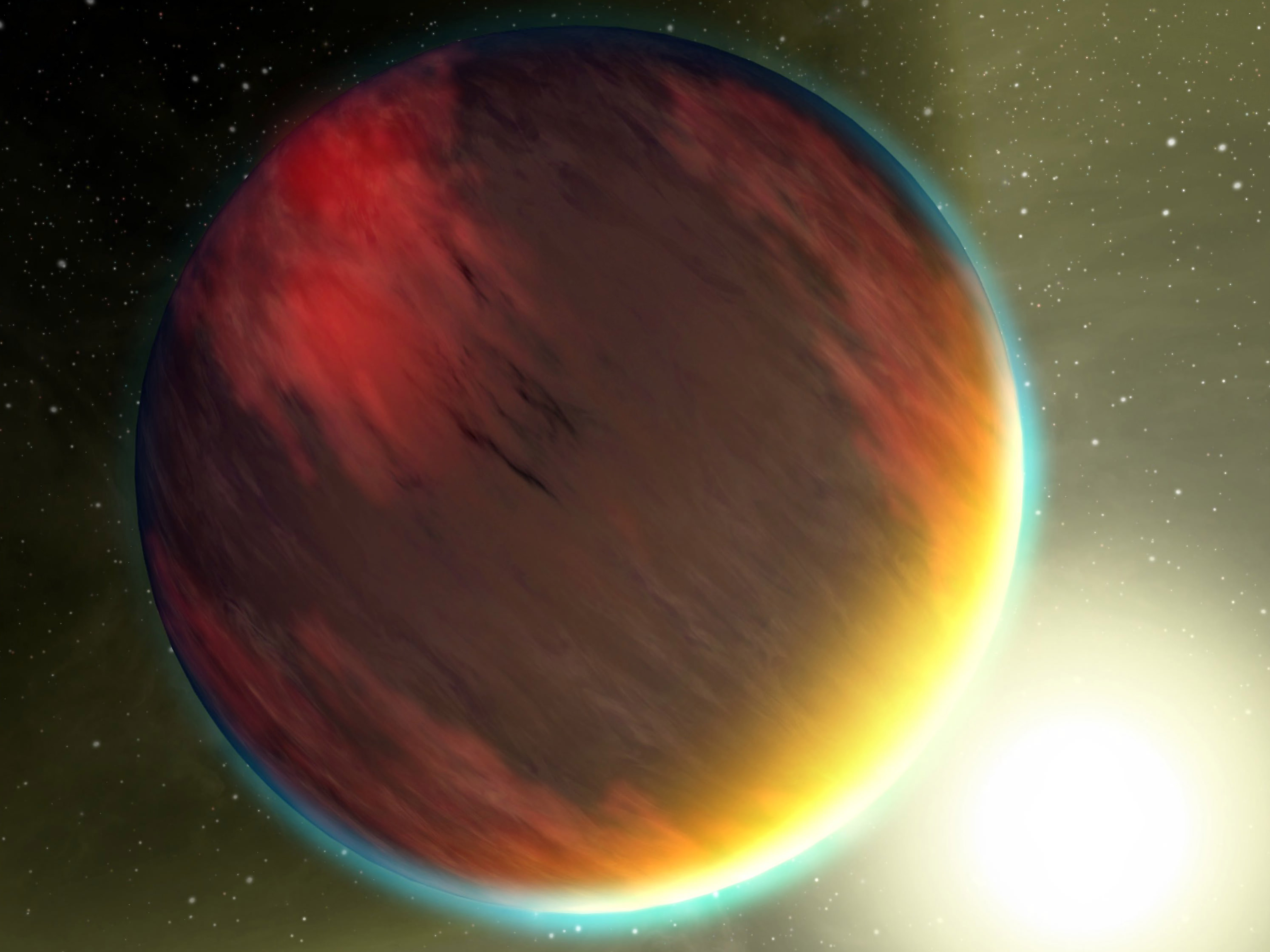The discovery of extra-solar planets has certainly heated up in the past few years. With the deployment of the
Kepler
mission in 2009, several thousands of exoplanet candidates have been discovered and over 2,500 have been confirmed. In many cases, these planets have been gas giants orbiting close to their respective stars (aka. "Hot Jupiters"), which has confounded some commonly-held notions of how and where planets form.
Beyond these massive planets, astronomers also discovered a wide range of planets that range from massive terrestrial planets ("Super-Earths) to Neptune-sized giants. In a
recent study
, an international team astronomers discovered three new exoplanets orbiting three different stars. These planets are an interesting batch of finds, consisting of two "Hot Saturns" and one Super-Neptune.
This
study
, titled "
The discovery of WASP-151b, WASP-153b, WASP-156b: Insights on giant planet migration and the upper boundary of the Neptunian desert
", recently appeared in the scientific journal
Astronomy and Astrophysic
s. Led by Olivier. D. S. Demangeon, a researcher from the
Institute of Astrophysics and Space Science
in Portugal, the team used data from the SuperWASP exoplanet-hunting survey to detect signs of three new gas giants.
[caption id="attachment_114834" align="aligncenter" width="580"]
Artist's concdption of a Neptune-sized planet with a clear atmosphere, passing across the face of its star. Credit: NASA/JPL-Caltech
[/caption]
The
Super Wide Angle Search for Planets
(SuperWASP) is an international consortium that uses wide-angle
Transit Photometry
to monitor the night sky for transit events. The program relies on robotic observatories located on two continents - SuperWASP-North, located at the
Roque de los Muchachos Observatory
in Canary Island; and SuperWASP South, at the
South African Astronomical Observatory
, near Sutherland, South Africa.
From the SuperWASP survey data, Dr. Demangeon and her colleagues were able to detect three transit signals coming from three distant stars - WASP-151, WASP-153 and WASP-156. This was then followed by spectroscopic observations performed using the
Haute-Provence Observatory
in France and the
La Silla Observatory
in Chile, which allowed the team to confirm the nature of these planets.
From this, they determined that WASP-151b and WASP-153b are two "hot Saturns", meaning they are low-density gas giants with close orbits. They orbit their respective suns, which are both early G-type stars (aka. yellow dwarfs, like our Sun), with an orbital period of 4.53 and 3.33 days. WASP-156b, meanwhile, is a Super-Neptune that orbits a K-type (orange dwarf) star. As they indicated in their study:
[caption id="attachment_137680" align="aligncenter" width="580"]
Number of exoplanets discovered by the Kepler mission as of May 10th, 2016, based on their classification. Credit: W. Stenzel/NASA Ames
[/caption]
Taken together, these planets represent some major opportunities for exoplanet research. As they indicate, "these three planets also lie close to (WASP-151b and WASP-153b) or below (WASP-156b) the upper boundary of the Neptunian desert." This refers to the boundary astronomers have observed around stars where shot period Neptune-size planets are very unlikely to be found.
Basically, of all the short period exoplanets (less than 10 days) to be discovered so far, the majority have tended to be in the "Super-Earth" or "Super-Jupiter" category. This deficit of Neptune-like planets has been attributed to different mechanisms when it comes to the formation and evolution for hot Jupiters and short-period super-Earths, as well as it being the result of gas envelop-depletion caused by a star's ultraviolet radiation.
So far, only nine "Super-Neptunes" have been discovered; so this latest discovery (who's characteristics are well know) should provide plenty of opportunities for research. Or as Dr. Demangeon and her colleagues explain in the study:
[caption id="attachment_101546" align="aligncenter" width="580"]
Artist's impression of two super-Earths in the same system as a Neptune-sized exoplanet in the Kepler-62 system. Credit: David A. Aguilar (CfA)
[/caption]
The team also offered some possible explanations for the existence of a "Neptunian desert" based on their findings. For starters, they proposed that a high-eccentricity migration could be responsible, where Neptune-sized ice giants form in the outer reaches of a star system and migrate inward over time. They also indicate that their discovery offers compelling evidence that ultra-violet radiation and gas envelope-depletion could be a key part of the puzzle.
But of course, Dr. Demangeon and her colleagues indicate that further research will be necessary to confirm their hypothesis, and that further studies are needed to properly constrain the boundaries of the so-called "Neptunian desert". They also indicate that future missions like NASA's
Transiting Exoplanet Survey Satellite
and the ESA's
PLAnetary Transits and Oscillations of stars
(PLATO) mission will be vital to these efforts.
"Obviously, a more thorough analysis is necessary to investigate all the possible implications behind this hypothesis," they conclude. "Such an analysis is out of the scope of this paper but we think that this hypothesis is worth investigating. In this context, a search for long period companions that might have triggered the high eccentricity migration or an independent age estimate through asterosiesmology with TESS or Plato would be particularly interesting."
The sheer number of exoplanets discoveries made in recent decades has allowed astronomers to test and revise commonly-held theories about how planetary systems form and evolve. These same discoveries have also helped advance our understanding of how our own Solar System came to be. In the end, being able to study a diverse array of planetary systems, which are different stages in their history, is allowing us to create a sort of timeline for cosmic evolution.
Further Reading: Astronomy and Astrophysics
 Universe Today
Universe Today
